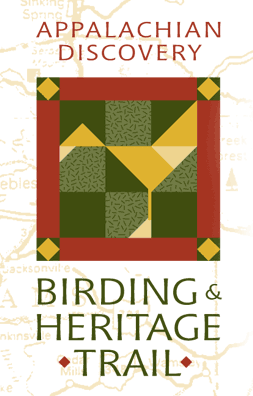 There is an entire publication designed to help you find the best places to bird in Adams County. Maybe we need to come up with a botany trail as well! Let's start at the Conrad Tract-
There is an entire publication designed to help you find the best places to bird in Adams County. Maybe we need to come up with a botany trail as well! Let's start at the Conrad Tract- Nina H., Faye S., your Weedpicker, and "Kat Doc" are standing by the trail head sign at the Conrad Tract. To get there, follow the directions to the Wilderness Ttrail, but stop a 1/2 mile short- at this sign.
Nina H., Faye S., your Weedpicker, and "Kat Doc" are standing by the trail head sign at the Conrad Tract. To get there, follow the directions to the Wilderness Ttrail, but stop a 1/2 mile short- at this sign.The 24 acre Conrad Tract was conserved through the efforts of OOS , The Nature Conservancy and Clean Ohio Funds. To read more about that, go here.
Conserving property for birds and botany is a worthy cause, and unprotected natural areas are in grave risk these days. Unfortunately, many places people thought were protected, like National and State Parks are in danger's way as well.
But let's talk ferns. The Conrad Tract features some dolomite rock out croppings, covered with rare and unusual plants... and a hand-full of fabulous ferns that even I can remember! This Walking fern with its long tapering pinnae tip, touches down on the mossy rock and starts a new plant. Hence its growth habit suggests "walking" across the rocks.
 Purple Cliffbrake, Pellaea atropurpurea is a rarity for Ohio. There are several other cliffbrakes, but this one sports purple stems.
Purple Cliffbrake, Pellaea atropurpurea is a rarity for Ohio. There are several other cliffbrakes, but this one sports purple stems.
 In a Weedpicker science experiment, we poured a little water on one frond at the beginning of our hike. When we returned, the plant had already started to green and looked a bit resurrected.
In a Weedpicker science experiment, we poured a little water on one frond at the beginning of our hike. When we returned, the plant had already started to green and looked a bit resurrected.
 This property is also known for its White Cedar, Thuja occidentalis both living and dead. These standing remains are monuments to past forest lives... possibly hundreds of years old.
This property is also known for its White Cedar, Thuja occidentalis both living and dead. These standing remains are monuments to past forest lives... possibly hundreds of years old. Much of the property is a high, dry ridge-top which protects the view scape of The Wilderness property. This photo was taken from below.
Much of the property is a high, dry ridge-top which protects the view scape of The Wilderness property. This photo was taken from below.


No comments:
Post a Comment